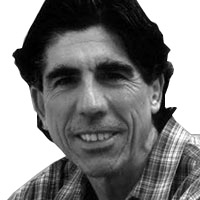Seventy-five years ago in the midst of World War II, Anna Freud, the daughter of Sigmund Freud, and her close friend, Dorothy Burlingham, published their classic study, War and Children, documenting the impact that separating children from their parents had during a time when England was under attack from Nazi Germany.
Freud and Burlingham knew their subject firsthand. They had been directing the Hampstead War Nurseries, which provided children, many of whom had lost their homes to German bombs, with residential care and comparative safety.
Today, thanks to the Trump administration’s policy of criminally prosecuting asylum-seeking adult immigrants who do not cross into the United States legally and separating them from their children, Freud and Burlingham’s study of children in crisis has become relevant in ways its authors never could have imagined in 1943.
War and Children reflects how the staff of the Hampstead War Nurseries, which consisted of three different centers, did their best to safeguard the vulnerable children they took in. In contrast to the Trump administration, which has sought to make the separation of parents and children as difficult as possible in order to discourage asylum seekers, particularly those from Central America, the aim of the Hampstead Nurseries was benign. The Hampstead staff wanted to keep the children for whom they were responsible as free from trauma as possible.
But the staff quickly discovered good intentions were not enough. For the children in their nurseries, separation from their families could be scarier than the Blitz. As Freud and Burlingham observed, “The war acquires comparatively little significance for children so long as it only threatens their lives, disturbs their material comfort, or cuts their food. It becomes enormously significant the moment it breaks up family life and uproots the first emotional attachments of the child with the family group.”
To make matters worse, the separation of children at the Hampstead War Nurseries from their families often occurred in haste under the pressure of war. “The child experiences shock when it is suddenly and without preparation exposed to dangers with which it cannot cope emotionally,” Freud and Burlingham noted. “In reality it is the very quickness of the child’s break with the mother that contains all the dangers of abnormal consequences.”
More concerned with practice than theory, Freud and Burlingham were unwilling to justify treatment shortcomings by saying they were acting for the greater good of the children in the Hampstead War Nurseries. They went out of their way to acknowledge that “all these improvements in the child’s life may dwindle down to nothing when weighed against the fact that it has to leave its family to gain them.”
The Hampstead War Nurseries were not only child friendly. They were parent friendly. The staff made a point of welcoming visits from the mothers of the children at all times. They did their best to make the separation of mother and child gradual, so that the child could get used to it in stages, and they organized their nurseries into family-like units with four or five children under the care of a single mother-substitute. None of these measures, Freud and Burlingham realized, made the nursery a home, but they lessened the shock that came from the temporary breakup of families.
In the case of Anna Freud, the guiding spirit of the Hampstead War Nurseries and later director of the Hampstead Child Therapy Clinic, the strategies she pioneered to make the nurseries a welcoming place reflected her insights into child psychology. But Freud was also driven by her own situation. In 1938 she had come to England with her famous father and family as a refugee from a Nazi-dominated Austria. She knew what it was like to depend on others for a safe haven. In Vienna she had been interrogated by the Gestapo.
Nobody in the Trump administration—from the president to Attorney General Jeff Sessions to Homeland Security Secretary Kirstjen Nielsen—brings such a background to the issue of how we should treat those hoping for asylum in America or shows any sign of being influenced by Democratic Senator Diane Feinstein’s proposed bill to halt the separation of immigrant children from their parents.
But it doesn’t take personal knowledge of the Holocaust or its history to understand the damage that is currently being done to young children in order to discourage their desperate parents from finding a haven in America. The children have deliberately been made hostages to government policy.
In story after story, Freud and Burlingham illustrated how acutely children suffer even when they are separated from parents in the country of their birth and placed among skilled caregivers with the best of intentions. Nothing is dated about their conclusions, which have become still more relevant with new reports that the Trump administration is considering erecting a tent city at Fort Bliss in Texas to deal with the overflow of separated immigrant children it has created.
These days the psychological points War and Children made at a time when World War II was far from settled may be seen in the stance that the American Academy of Pediatrics has taken in its letters to the Department of Homeland Security urging an end to the “sweeping cruelty” of the Trump administration’s policy of parent-child separation.






